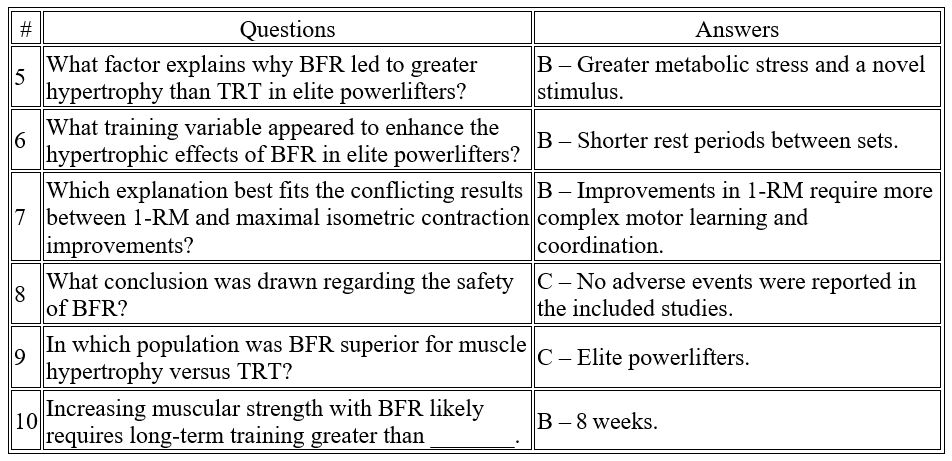A Brief Systematic Review and Meta analysis (Strength & Conditioning Journal, 2025)
Reviewed by John Baur, PT, DPT, OCS CSCS, FAAOMPT
This systematic review and meta‑analysis set out to determine whether low‑load blood‑flow‑restriction (BFR) resistance training can match or outperform conventional traditional resistance training (TRT) for increasing muscle size, strength and endurance in healthy adults. Twenty randomized controlled trials (541 screened records, 20 included) met pre‑defined PICOS criteria; seven contributed hypertrophy data and nine contributed strength data to the quantitative analyses.
- Primary outcome – muscle hypertrophy: 17 of 20 trials reported significant growth with training. A pooled effect size of 0.045 (95 % CI –0.278 to 0.367) indicated no statistical difference between BFR and TRT for increases in whole‑muscle CSA or volume.
- Secondary outcome – strength: Nine studies entered the meta‑analysis (1 RM, isometric or isokinetic tests). The pooled effect size of –0.149 (95 % CI –0.439 to 0.141) likewise showed no significant difference in strength gains between modalities. Qualitative trends suggested TRT may yield faster early‑phase 1 RM gains (< 8 weeks), whereas BFR “catches up” with longer training (> 8 weeks).
- Muscle endurance: Only one study assessed endurance; both methods improved repetitions‑to‑failure equally, preventing firm conclusions.
- Contextual moderators: Rest intervals, training to failure, programme duration and athlete training status moderated results. For example, BFR out‑performed TRT for quadriceps hypertrophy in elite powerlifters—possibly due to the novel metabolic stress imposed by short‑rest, low‑load occlusion work.
- Safety profile: Across all trials no adverse events were reported, supporting BFR as a safe alternative when heavy loading is undesirable or contraindicated.
Practical takeaway: Coaches and clinicians can prescribe low‑load BFR to build muscle and strength when heavy loading is impractical, ensuring programmes run ≥ 8 weeks and use appropriately short rest intervals to maximise metabolic stress.


